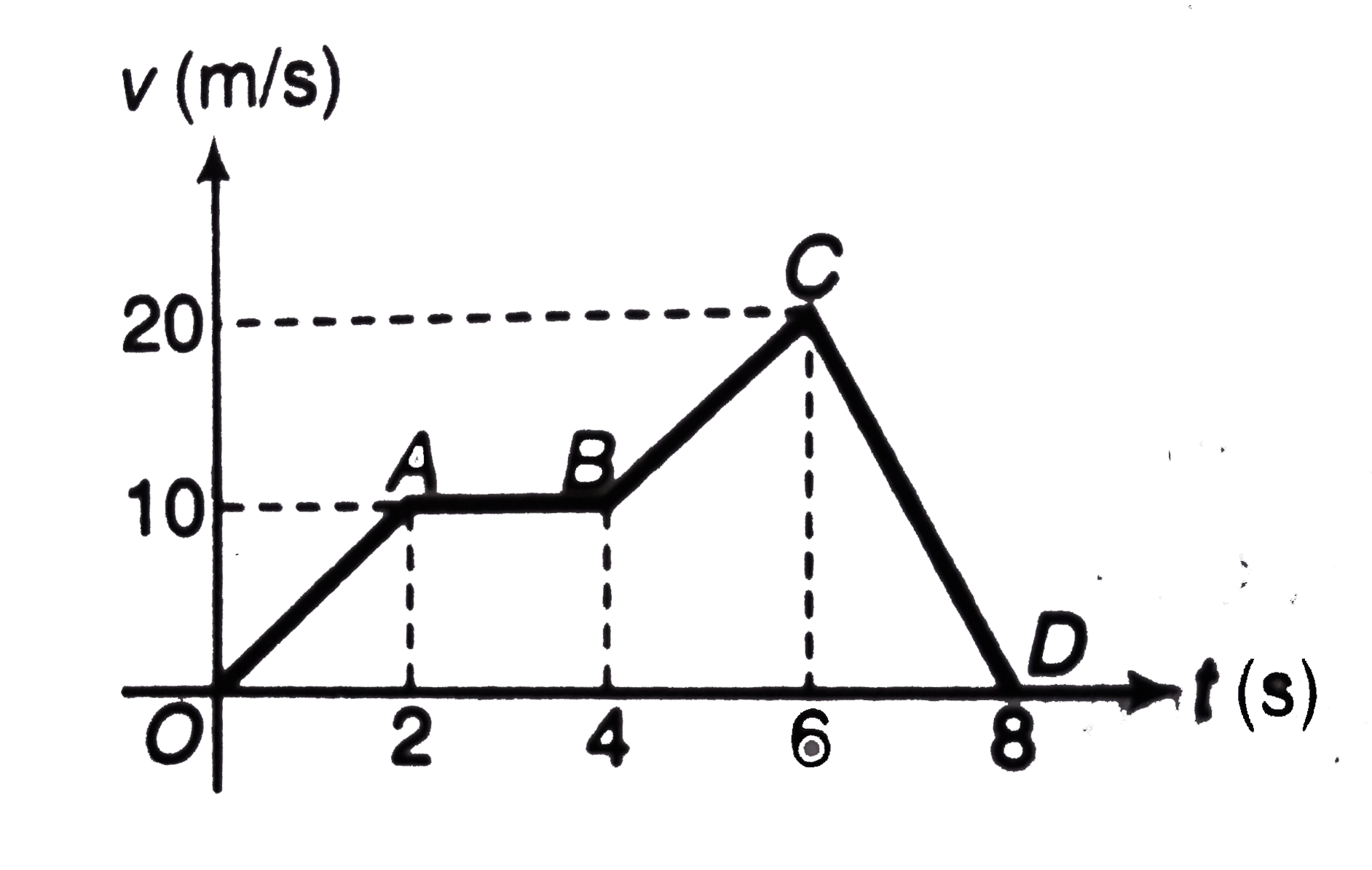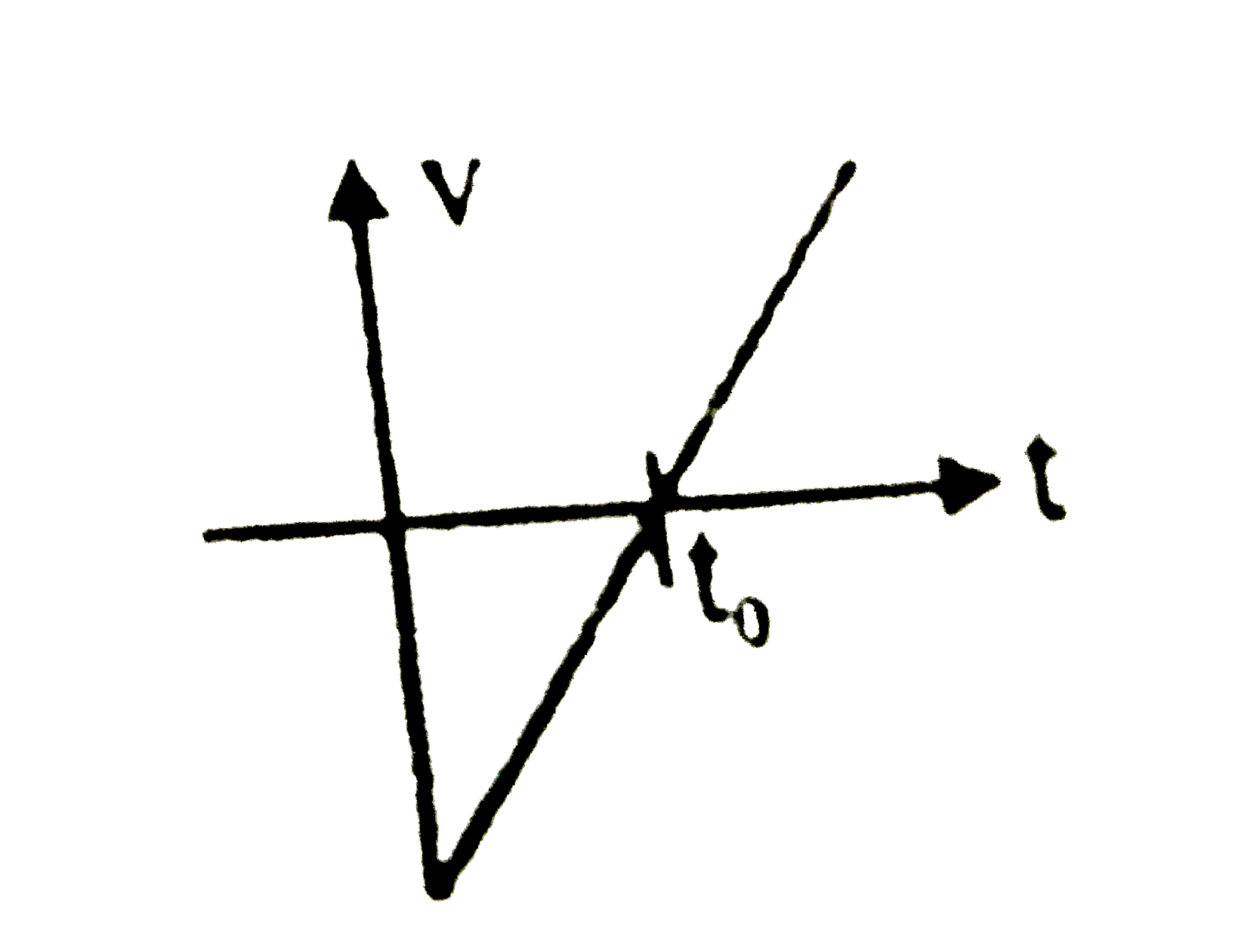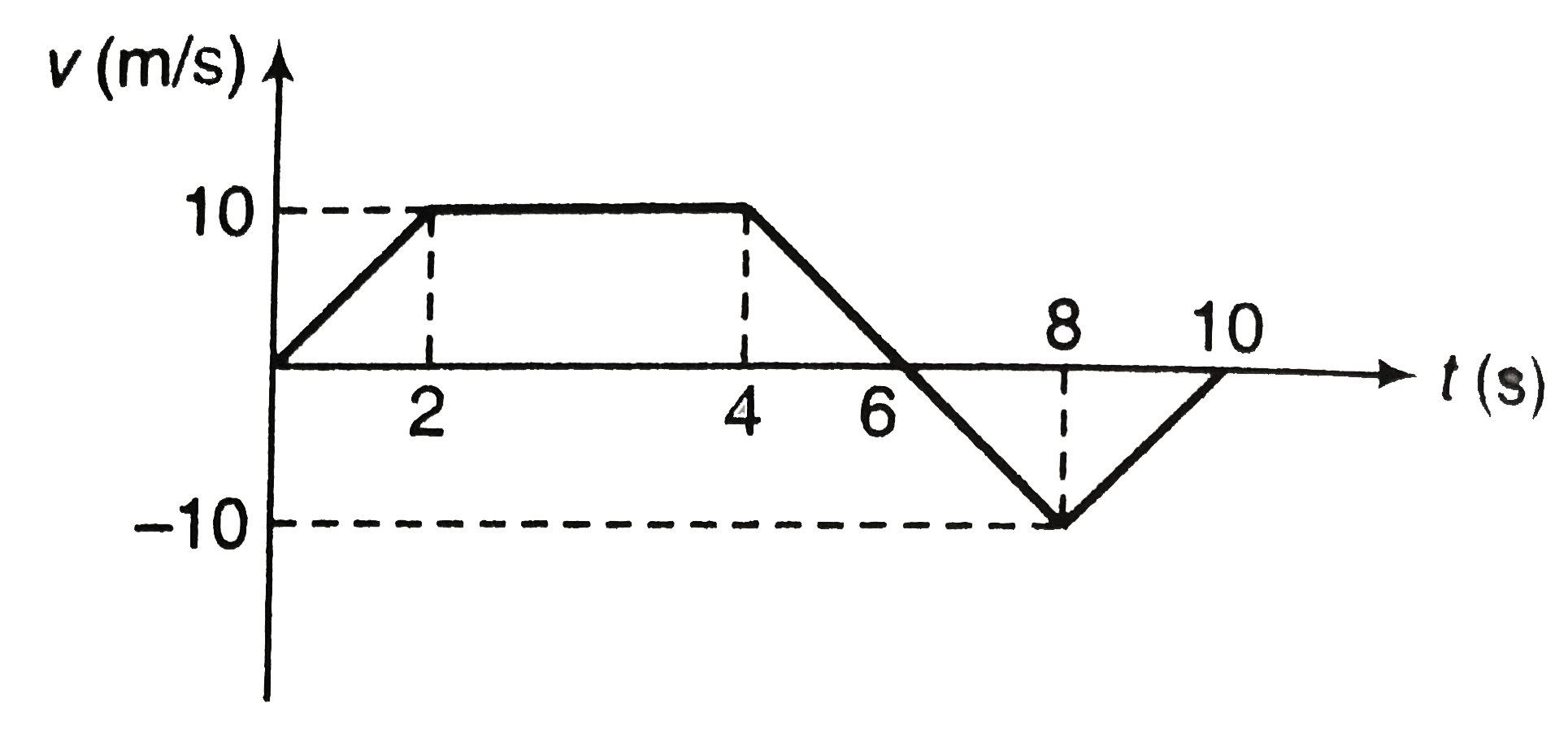Velocity-time equation of a particle moving in a straight line is, v=(10+2t+3t2) (SI units) Find
(a) displacement of particle from the mean position at time t=1s, if it is given that displacement is 20m at time t=0.
(b) acceleration-time equation.
The correct Answer is:A
To solve the problem step by step, we will address both parts of the question: (a) finding the displacement of the particle at t=1s and (b) determining the acceleration-time equation.
Part (a): Finding Displacement at t=1s
1. Given the Velocity Equation: The velocity of the particle is given by the equation:
v=10+2t+3t2
2. Relate Velocity to Displacement: We know that velocity is the derivative of displacement with respect to time:
dxdt=v
Therefore, we can express displacement as:
dx=vdt
3. Integrate to Find Displacement: To find the displacement x, we integrate the velocity function with respect to time:
x=∫vdt=∫(10+2t+3t2)dt
4. Perform the Integration:
x=10t+2t22+3t33+C
Simplifying this gives:
x=10t+t2+t3+C
5. Determine the Constant of Integration C: We know that at t=0, the displacement x=20m:
x(0)=10(0)+(0)2+(0)3+C=20
Thus, C=20.
6. Final Displacement Equation: The displacement equation is:
x=t3+t2+10t+20
7. Calculate Displacement at t=1s:
x(1)=(1)3+(1)2+10(1)+20=1+1+10+20=32m
Part (b): Finding the Acceleration-Time Equation
1. Acceleration Definition: Acceleration is the derivative of velocity with respect to time:
a=dvdt
2. Differentiate the Velocity Equation: We differentiate the given velocity equation:
v=10+2t+3t2
Taking the derivative:
a=ddt(10+2t+3t2)=0+2+6t
3. Final Acceleration Equation: Therefore, the acceleration-time equation is:
a=2+6t
Summary of Results:
- (a) The displacement of the particle from the mean position at t=1s is 32m.
- (b) The acceleration-time equation is a=2+6t.
v=10+2t+3t2
dxdt=v
Therefore, we can express displacement as:
dx=vdt
x=∫vdt=∫(10+2t+3t2)dt
x=10t+2t22+3t33+C
Simplifying this gives:
x=10t+t2+t3+C
x(0)=10(0)+(0)2+(0)3+C=20
Thus, C=20.
x=t3+t2+10t+20
x(1)=(1)3+(1)2+10(1)+20=1+1+10+20=32m
a=dvdt
v=10+2t+3t2
Taking the derivative:
a=ddt(10+2t+3t2)=0+2+6t
a=2+6t
- (a) The displacement of the particle from the mean position at t=1s is 32m.
- (b) The acceleration-time equation is a=2+6t.
Topper's Solved these Questions
- KINEMATICSBOOK - DC PANDEY ENGLISHCHAPTER - KINEMATICSEXERCISE - Example Type 1
1 Videos
- KINEMATICSBOOK - DC PANDEY ENGLISHCHAPTER - KINEMATICSEXERCISE - Example Type 2
1 Videos
- GRAVITATIONBOOK - DC PANDEY ENGLISHCHAPTER - GRAVITATIONEXERCISE - (C) Chapter Exercises
45 Videos
- KINEMATICS 1BOOK - DC PANDEY ENGLISHCHAPTER - KINEMATICS 1EXERCISE - INTEGER_TYPE
15 Videos
Similar Questions
The velocity (v)-time (t) graph of a partide moving along a straight line is as shown in the figure. The displacement of the particle from t = 0 to t = 4 is

View SolutionVelocity of a particle moving in a straight line varies with its displacement as v=(√4+4s)m/s. Displacement of particle at time t=0 is s=0. Find displacement of particle at time t=2s.
View SolutionVelocity time equation of a particle moving in a straight line is v=2t−4 for t≤2s and v=4−2t for t>2.The distance travelled by the particle in the time interval from t=0 to t=4s is (Here t is in second and v in m/s)
View SolutionVelocity-time graph of a particle moving in a straight line is shown in figure. Plot the corresponding displacement-time graph of the particle if at time t=0, displacement s=0.

View SolutionVelocity-time graph of a particle moving in a straight line is shown in figure. Plot the corresponding displacement-time graph of the particle if at time t=0, displacement s=0.

View SolutionThe velocity time graph of a particle moving in a straight line is given line is given in the figure. Then starting from t=0, the particle

View SolutionVelocity-time graph of a particle moving in a straight line is shown in figure. At time t=0, displacement of the particle from mean position is 10 m. Find

(a) acceleration of particle at t=1s,3sand9s.
(b) position of particle from mean position at t=10s.
(c) write down s-t equation for time interval (i)0≤t≤2s, (ii) 4s≤t≤8s
View SolutionVelocity (in m/s) of a particle moving along x-axis varies with time as, v=(10+5t−t2) At time t=0,x=0. Find
(a) acceleration of particle at t=2s and
(b) x-coordinate of particle at t=3s
View SolutionA particle is moving in a straight line according to graph given below : (a is acceleration, v is velocity, x is position, t is time) :

View SolutionAt time t , the displacement of a particle moving in a straight line by x=−4t2+2t . Find the velocity and acceleration a when t = (1/2) s .
View Solution
